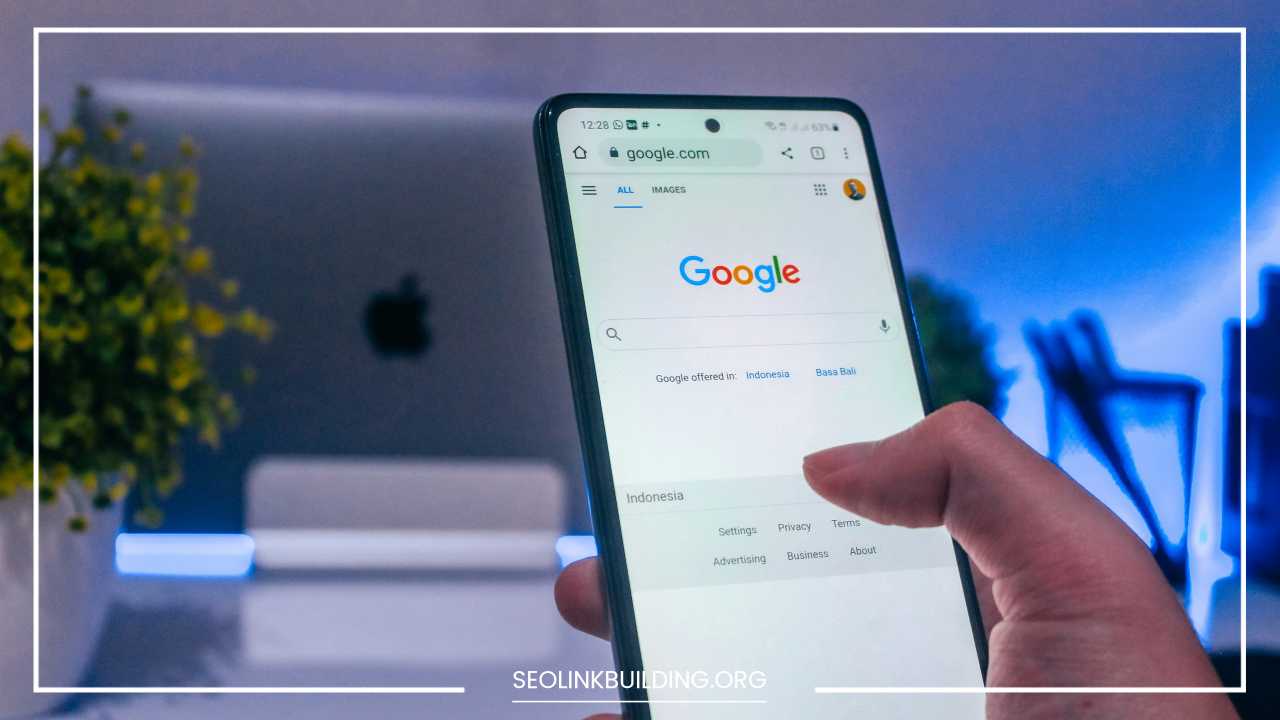9 Reasons Your Website Isn’t Showing Up On Google (and How to Fix It)

Website Isn’t Showing Up On Google
Reasons Your Website Isn’t Showing Up on Google (and How to Fix It)
In the digital age, having your website prominently displayed on Google is crucial for attracting traffic and growing your online presence.
However, many websites struggle with visibility, which can stem from a variety of issues. Understanding why your site isn’t showing up on Google and knowing how to address these problems is essential for improving your search engine ranking and overall online effectiveness.
This comprehensive guide will explore nine common reasons why your website might not be appearing in Google’s search results and provide actionable strategies to resolve these issues.
Understanding Google’s Algorithm
Google’s search algorithm is an intricate system that evaluates numerous factors to deliver the most relevant and useful results to users.
The algorithm is designed to assess website content, structure, authority, and user experience, among other elements.
It is constantly evolving, with updates and changes aimed at improving the quality of search results. If your website isn’t appearing in search results, it’s likely due to one or more factors related to these areas.
1. Lack of Optimization
Keyword Research:
Effective keyword research is the foundation of good SEO. Keywords are the terms and phrases that users enter into search engines when looking for information.
To ensure your website ranks well, you need to target keywords that are relevant to your audience and industry.
- Tools and Techniques: Utilize tools like Google Keyword Planner, SEMrush, Ahrefs, and Ubersuggest to identify high-value keywords. Look for keywords with a balance between search volume and competition. Long-tail keywords, which are more specific phrases, can be less competitive and more targeted, making them valuable for niche audiences.
- Competitor Analysis: Analyze the keywords that your competitors are targeting. This can provide insights into what works in your industry and help you find gaps in your own strategy.
- Intent Matching: Ensure that the keywords you target match the intent behind users’ searches. For example, a user searching for “best digital cameras” might be looking for product reviews or purchasing options, while “how to use a digital camera” indicates an interest in learning.
On-Page Optimization:
Once you’ve identified your target keywords, integrating them into your website’s content is crucial for SEO.
- Title Tags and Meta Descriptions: Include your primary keywords in title tags and meta descriptions. These elements are vital for search engines and users to understand the content of your pages. Ensure that your title tags are compelling and relevant, as they are often the first impression users get from search results.
- Headings and Subheadings: Use headings (H1, H2, H3, etc.) to structure your content. Incorporate keywords naturally in these headings to help search engines understand the hierarchy and relevance of your content.
- Content Integration: Place keywords naturally within the body of your content. Avoid keyword stuffing, which can lead to penalties from search engines. Aim for a natural flow of text that is informative and engaging.
Content Quality:
High-quality content is a key factor in achieving better search rankings. Google values content that is useful, relevant, and engaging.
- Value and Relevance: Create content that provides real value to your audience. Address their needs, answer their questions, and solve their problems. High-quality content is well-researched, well-written, and directly addresses the topics of interest.
- Engagement Metrics: Monitor user engagement metrics such as bounce rate, time on page, and click-through rate (CTR). High engagement indicates that users find your content valuable and relevant.
- Regular Updates: Keep your content updated and relevant. Regularly review and refresh older content to ensure it remains accurate and valuable.
2. Technical Issues
Mobile-Friendliness:
With mobile-first indexing, Google primarily uses the mobile version of a site for indexing and ranking.
- Responsive Design: Ensure your website is responsive, meaning it adapts to different screen sizes and devices. Test your site on various devices to ensure a seamless experience.
- Mobile Testing Tools: Use tools like Google’s Mobile-Friendly Test to identify and fix issues that may affect mobile usability. The tool provides recommendations for improving mobile performance.
Site Speed:
Page speed is a crucial factor for both user experience and SEO. Slow-loading pages can lead to high bounce rates and lower rankings.
- Image Optimization: Compress images to reduce file size without compromising quality. Use tools like TinyPNG or ImageOptim to optimize images for faster loading times.
- Code Minification: Minify CSS, JavaScript, and HTML files to reduce their size and improve load times. Tools like UglifyJS or CSSNano can help with code minification.
- Hosting and Caching: Choose a reliable hosting provider and utilize caching solutions to speed up page delivery. Consider using a content delivery network (CDN) to distribute content across multiple servers.
Broken Links:
Broken links, both internal and external, can disrupt the user experience and affect search engine crawling.
- Regular Audits: Use tools like Screaming Frog SEO Spider or Ahrefs to regularly check for broken links on your website. Fix or remove broken links promptly to maintain a healthy site.
- Redirects: Implement 301 redirects for any outdated or moved content to guide users and search engines to the correct page. This helps preserve link equity and improves user experience.
XML Sitemap:
An XML sitemap helps search engines understand the structure of your website and find all important pages.
- Creation and Submission: Use tools like Yoast SEO or Google Search Console to create and submit an XML sitemap. Regularly update the sitemap to reflect any changes to your site’s structure.
- Indexing: Monitor the status of your sitemap in Google Search Console to ensure that all important pages are being indexed correctly.
Robots.txt:
The robots.txt file guides search engines on which pages they can crawl and index.
- Configuration: Ensure that your robots.txt file is correctly configured to allow search engines to access important pages. Avoid blocking essential content or sections of your site inadvertently.
- Testing: Use the robots.txt Tester tool in Google Search Console to verify the correctness of your file and troubleshoot any issues.
3. Thin Content
Quantity and Quality:
Google prioritizes sites with substantial and valuable content. Thin content, which lacks depth or value, can hurt your rankings.
- Comprehensive Coverage: Create detailed content that thoroughly covers your topics. Longer articles often perform better, provided they are well-written and informative.
- Avoiding Thin Pages: Remove or improve pages with thin content. Focus on adding value through in-depth information, actionable insights, and engaging media.
Content Length:
While there’s no definitive rule for content length, longer content that provides comprehensive coverage generally ranks better.
- In-Depth Articles: Aim to create long-form content that addresses topics in detail. Incorporate various content types, such as lists, how-to guides, and case studies, to provide a richer user experience.
- Quality Over Quantity: Ensure that longer content remains relevant and engaging. Avoid padding articles with unnecessary information just to increase word count.
4. Poor User Experience
Navigation:
A well-organized website enhances user experience and helps search engines understand your site’s structure.
- Clear Menus: Use clear and descriptive menu labels to guide users through your site. Ensure that navigation is intuitive and helps users find the information they need quickly.
- Internal Linking: Implement a strategic internal linking structure to connect related content. This helps users discover additional information and aids search engines in crawling and indexing your site.
Mobile-Friendly Design:
A poor mobile experience can negatively impact search rankings and user satisfaction.
- Responsive Elements: Ensure that all elements of your website, including buttons, forms, and images, are mobile-friendly. Test usability on different devices and screen sizes.
- User Testing: Conduct user testing to identify and address any issues affecting the mobile experience. Gather feedback from real users to make informed improvements.
Site Structure:
A logical and hierarchical site structure improves user experience and search engine crawlability.
- Organized Content: Structure your website with a clear hierarchy, using categories and subcategories to organize content. This helps users and search engines navigate your site more effectively.
- Sitemap Navigation: Consider implementing a visual sitemap or breadcrumb navigation to enhance user orientation and improve site usability.
5. Low Authority
Backlinks:
Backlinks from reputable websites signal to Google that your content is valuable and trustworthy.
- Quality Over Quantity: Focus on acquiring backlinks from high-authority and relevant sites. Strategies include guest blogging, creating shareable content, and building relationships with industry influencers.
- Link Building Tactics: Use tactics such as broken link building, where you identify and replace broken links on other sites with links to your content. This helps you gain valuable backlinks while assisting site owners with their link issues.
Domain Age:
While older domains might have a slight advantage, domain age is less critical than other factors such as content quality and backlinks.
- Focus on Quality: Prioritize creating high-quality content and acquiring valuable backlinks. Over time, these efforts will contribute to your site’s authority and rankings.
- Building Reputation: Establishing a strong online presence through consistent content creation, engagement, and backlink acquisition helps build domain authority regardless of age.
6. Duplicate Content
Unique Content:
Duplicate content can confuse search engines and lead to lower rankings. Ensure each page on your site offers unique and valuable content.
- Original Writing: Create original content that provides unique insights or perspectives. Avoid copying content from other websites or duplicating content across multiple pages on your own site.
- Content Audits: Regularly audit your site for duplicate content issues. Tools like Copyscape or Siteliner can help identify duplicate content across your site.
Canonical Tags:
Canonical tags help prevent duplicate content issues by indicating the preferred version of a page.
- Implementation: Use canonical tags to specify the original version of content when you have multiple versions with similar or identical content. This consolidates ranking signals to the preferred page.
- Verification: Ensure that canonical tags are correctly implemented and pointing to the right URLs. Check for errors or inconsistencies that may affect your SEO efforts.
7. Lack of Social Signals
Social Media Engagement:
While social signals may not directly impact search rankings, they can indirectly influence visibility and traffic.
- Active Presence: Maintain an active presence on social media platforms relevant to your industry. Engage with your audience by sharing valuable content, responding to comments, and participating in discussions.
- Content Promotion: Promote your website’s content on social media to increase visibility and encourage sharing. High engagement on social media can drive traffic and generate backlinks.
Shareability:
Creating content that is easy to share and encourages user engagement can enhance visibility.
- Social Sharing Buttons: Add social sharing buttons to your content to make it easy for users to share your pages on their networks. Ensure that these buttons are prominently placed and functional.
- Encouraging Engagement: Craft content that resonates with your audience and encourages interaction. This can include creating shareable infographics, videos, and interactive content.
8. Penalties
Manual Actions:
Google may impose manual actions against websites that violate its guidelines, such as engaging in spammy practices or using misleading content.
- Google Search Console: Check Google Search Console for any notifications of manual actions. Address the issues outlined in the notifications to rectify the problems and request a review from Google.
- Guideline Compliance: Familiarize yourself with Google’s Webmaster Guidelines to ensure that your website adheres to best practices. Avoid black-hat SEO tactics that can lead to penalties.
Algorithm Updates:
Google’s algorithms are regularly updated to improve search results. Staying informed about these updates helps you adapt your SEO strategies.
- Industry News: Follow SEO industry news and updates from Google to stay informed about changes that may impact your site’s rankings. Resources like Moz, Search Engine Journal, and Google’s official blog provide valuable insights.
- Strategy Adaptation: Adjust your SEO strategies based on algorithm changes. This may involve revising content, improving user experience, or updating technical aspects of your site.
9. Insufficient Time
Indexing:
After making changes to your website, it can take time for Google to index and reflect those changes in search results.
- Request Indexing: Use Google Search Console to request indexing for new or updated content. This can help expedite the process and ensure that your changes are recognized by Google.
- Monitor Progress: Track the indexing status of your pages in Google Search Console. Monitor any issues that may affect indexing and address them promptly.
Patience:
SEO is a long-term process, and improvements in rankings and traffic may not be immediate.
- Consistent Efforts: Maintain consistency in your SEO efforts, including content creation, technical optimization, and link building. Over time, these efforts will contribute to improved search visibility.
- Long-Term Perspective: Understand that SEO results take time to materialize. Be patient and focus on continuous improvement and adaptation to achieve long-term success.
Final Thoughts
Improving your website’s visibility on Google involves addressing a range of factors, from technical issues and content quality to user experience and authority.
By understanding and resolving issues such as lack of optimization, technical problems, thin content, poor user experience, low authority, duplicate content, lack of social signals, penalties, and insufficient time, you can significantly enhance your website’s search engine performance.
Implementing best practices in SEO, monitoring performance, and staying updated on industry trends are essential for achieving and maintaining higher search rankings.
With patience and consistent effort, you can improve your website’s visibility, attract more organic traffic, and achieve your online goals.













